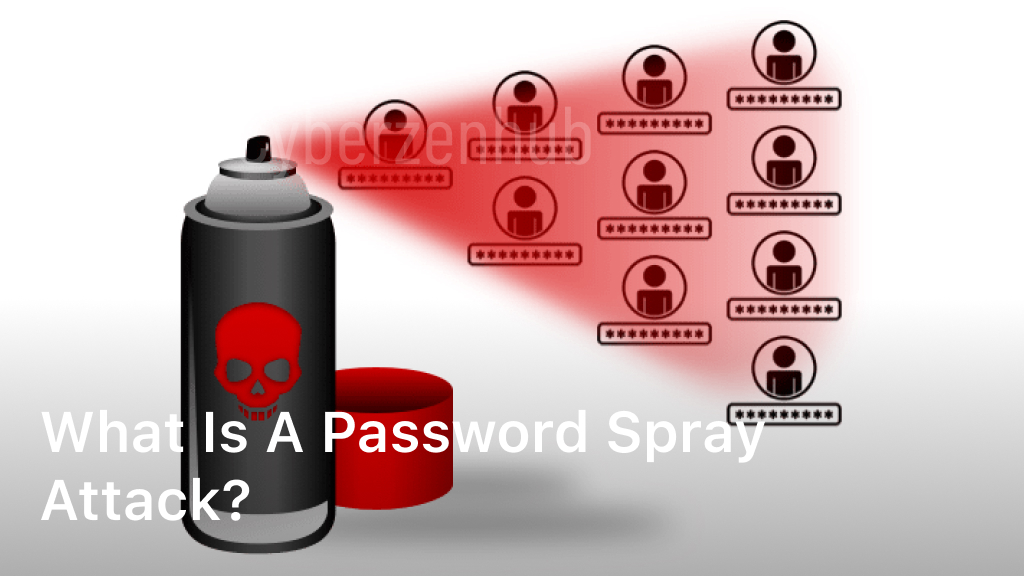In today’s digital age, cybersecurity threats are constantly evolving, and one such threat that has gained prominence is the password spray attack. This sophisticated technique is designed to compromise multiple user accounts by exploiting common weaknesses in password security. Understanding the mechanics of a password spray attack is crucial for individuals and organizations alike to protect against potential breaches.

Table of Contents
ToggleUnderstanding Password Spraying Attack
Password spraying represents a form of brute force attack where a malicious actor endeavors to utilize the same password across numerous accounts before moving to the next one. These attacks often succeed because many users resort to simplistic and easily guessable passwords, like “password” or “123456.”
In several organizations, users face lockouts after several failed login attempts. By trying one password across multiple accounts, password spraying circumvents the typical account lockouts associated with brute forcing a single account with numerous passwords.
One distinctive aspect of password spraying, as implied by the term “spraying,” is its ability to target thousands or even millions of users simultaneously, rather than focusing on a single account. This process is frequently automated and can occur gradually to avoid detection.
Password spraying attacks commonly exploit scenarios where applications or administrators set default passwords for new users. Single sign-on and cloud-based platforms are particularly susceptible to such attacks.
Despite its apparent simplicity compared to other cyber threats, even sophisticated cybercrime groups employ password spraying. For instance, the US Cybersecurity & Infrastructure Security Agency (CISA) issued an alert regarding state-sponsored cyber actors, which included password spraying among the various tactics they employ to infiltrate targeted networks.
How Password Spray Attacks Work
Password spray attacks are a cunning method employed by cyber attackers to gain unauthorized access to accounts or systems. Unlike traditional brute force attacks that target a single account with various password combinations, password spray attacks involve trying a few common passwords across multiple accounts.
This approach helps hackers evade detection by avoiding multiple failed login attempts on a single account, which could trigger security alerts. Instead, attackers aim to exploit weak passwords used by multiple users within an organization.
By spraying a small set of commonly used passwords across a large number of accounts, attackers increase their chances of successfully compromising at least one account. Once they gain access, hackers can escalate their attack and infiltrate deeper into the network, posing significant risks to data security and privacy.
Examples of Password Spray Attacks
Recent incidents have demonstrated the devastating impact of password spray attacks. For instance, in a high-profile breach, cybercriminals used this technique to gain unauthorized access to a large number of corporate accounts within a short period. Such attacks not only result in financial losses but also damage an organization’s reputation and erode customer trust.
Why Password Spray Attacks Are Effective
Password spray attacks are particularly effective due to several factors. Firstly, they exploit human tendencies to choose weak and easily guessable passwords. Secondly, they take advantage of the limited defense mechanisms in place to detect and prevent such attacks. Additionally, the widespread use of single-factor authentication makes it easier for attackers to compromise accounts.
Detecting and Preventing Password Spray Attacks
Detecting password spray attacks can be challenging, as they often mimic legitimate login attempts. However, organizations can implement measures such as anomaly detection and user behavior analytics to identify suspicious login patterns. Furthermore, enforcing strong password policies, implementing multi-factor authentication, and regularly educating users about cybersecurity best practices can significantly reduce the risk of password spray attacks.
Conclusion
In conclusion, a password spray attack poses a significant threat to the security of user accounts and sensitive information. By understanding how these attacks work and implementing robust security measures, individuals and organizations can mitigate the risk of falling victim to such cyber threats. Proactive detection, prevention, and education are essential components of a comprehensive cybersecurity strategy in today’s digital landscape.
FAQ
What makes password spray attacks different from brute force attacks?
Password spray attacks target multiple user accounts with a small set of commonly used passwords, while brute force attacks focus on repeatedly guessing a specific user’s password.
Are password spray attacks difficult to detect?
Yes, password spray attacks can be challenging to detect because they mimic legitimate login attempts. However, implementing advanced security measures can help identify suspicious login patterns.
How can organizations prevent password spray attacks?
Organizations can prevent password spray attacks by enforcing strong password policies, implementing multi-factor authentication, and regularly educating users about cybersecurity best practices.
What are the potential consequences of a successful password spray attack?
A successful password spray attack can result in unauthorized access to sensitive information, financial losses, damage to an organization’s reputation, and erosion of customer trust.
Why is it important to raise awareness about password spray attacks?
Raising awareness about password spray attacks is essential to empower individuals and organizations to take proactive steps to enhance their cybersecurity posture and protect against potential threats.















